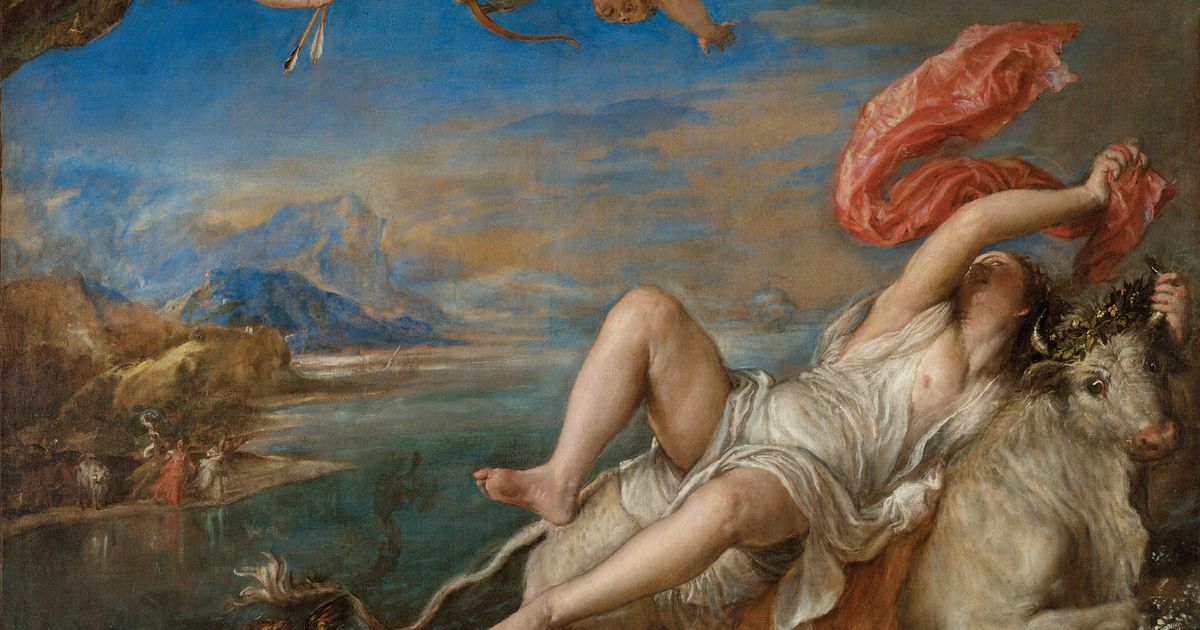
Burning up behind a mask under the humid glare of the mid-August sun, I went into this exhibition with more than a little apprehension and self-reproach, caused principally by the fact that I have little knowledge of Titian or Renaissance painting. Ovid’s Metamorphoses, the text on which these paintings are based, stirs in me no feeling other than general indifference. It feels shameful, the National Gallery pours this effect over me. It’s huge columns and dominating presence in the heart of London appear to require much prior knowledge and appreciation to get these works of art. They are all big, they are all Christian, they are all male. Maybe it’s something that comes with age, maybe you just need a gateway painting to spark an appreciation of art made more than 1 ½ centuries ago.
as her helplessness is subsumed into the bold brushstrokes and vivacity of his colouring
That painting was The Rape of Europa, the standout work from the seven on show in Titian: Love, Desire, Death. It shows Europa being carried off on the back of a bull, which the God Jupiter has transformed himself into, to later rape her. The nymphs call out in shock and bewilderment across the sea as her helplessness is subsumed into the bold brushstrokes and vivacity of his colouring. You believe all the objects and figures in all his paintings to be alive, the way he captures the pink satin flailing in the air, the silver fish agitating the water around it, the determined stare of the bull. I was naïve to assume that this would not be as affecting as it has been. Every time I sit before the blue light of my laptop to write this, it strikes me again, wow, that really was a great painting.

The Rape of Europa, 1560–2
Love, Desire, Death wastes no time getting at the heart of the matter, displaying Titian’s visual equivalents of poetry (or Poesie) together for the first time in over 4 centuries. Old tales of Gods and Goddesses, yet their effect is still fresh; the storytelling, the interplay between the paintings, the humanity with which these gods are depicted is striking. His depiction of Venus swooning to stop Adonis leaving her (and marching toward his death) is packed with fear and lust to spare. Longing is etched into every arch and curve of her back, yet a softness pervades each body that comes from the tip of Titian’s brush. This softness adds to the look of effortless quality that characterises these paintings, a state achieved at the crossroads of immense talent and total dedication.

The greatest strength of this exhibition is that it is short and sweet. One room, seven paintings, between which a couple dozen people attempt to keep distance from one another while still trying to consolidate their position in front of Titian’s masterworks. It is a perfect marriage of vision and effect, the exhibition does not need any more than it gives you, their unification feels greater than the value of the individual pictures. It is important, we are told, and fair play, it convinced me. Walking out again, I felt complete. I hadn’t felt like I missed anything or needed anything more as I negotiated the confusing one-way system that meanders through the museum and out into the oven-heat of Trafalgar Square.
Titian: Love, Desire, Death is at the National Gallery until the 17th January 2021.


